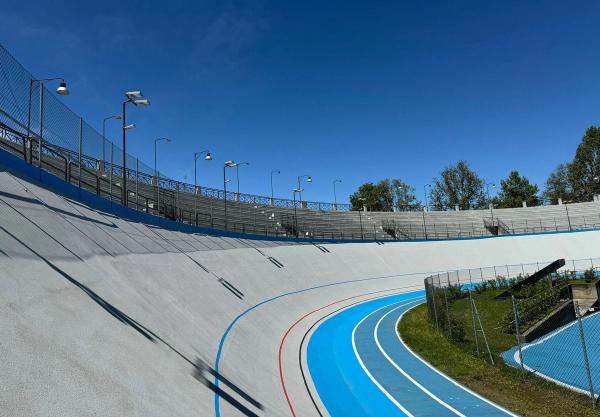Top tips for commuting by bike in the winter
Commuting by bike has many benefits but even for the hardiest of riders, winter can be a struggle, so here are some ways to make it more manageable
Alex Hunt
Junior Tech Writer
For a lot of us out there, commuting by bike is a nice easy way to fit in some additional kilometres into our weekly training. For others, it is a way of skipping traffic, saving fuel, and helping the environment. No matter what your reasons are for commuting by bike, as the nights draw in and the weather turns foul, finding the motivation to get the bike out and cycle to work can be hard.
The first thing to note is that winter commuting can be as pleasant – if not even more so – than commuting in the summer. Just because it is colder doesn’t mean that you don’t get to enjoy the serenity of a crisp early winter morning with the sun low on the horizon. There will be plenty of days where you do find yourself fighting the elements but that makes the good days even better.
Also, in winter if you dress correctly you have every chance of turning up to the office in a far more presentable state than in the summer. The lower temperatures allow you to regulate your temperature to prevent turning up as a hot sweaty mess. On this note, we are going to take a look at both short and long commutes and the different approaches they command.
It is always worse in your head

© GCN
Once you are out and a few minutes in to a winter commute you realise it wasn't as bad as you were expecting it to be
Even on the worst days, commuting by bike is never as bad as it is built up to be in your brain. The first five minutes might be unpleasant but once you are warm and into the swing of things, riding through the winter weather is not that bad. Commuting to work through the winter is one of the best boosts you can give yourself for a sense of accomplishment.
The challenge
Commuting through winter presents its own set of challenges specific to the conditions of the season. It is likely to be dark for at least one of your rides to or from work meaning you are going to need lights and reflective clothing.
The temperature is going to be a lot cooler than in summer months necessitating a specific wardrobe of warmer clothes. Winter and rain are a match made in heaven so riding through this season is going to be a lot more comfortable if you have a dependable set of waterproof riding kits to keep the worst of it off you.
Although it can seem like there is a lot that needs to be adapted or prepared for, when it comes to winter commuting it is as simple as ticking off the requirements listed above. If you take care of these elements everything else is less of a challenge.
Wet trousers are not nice
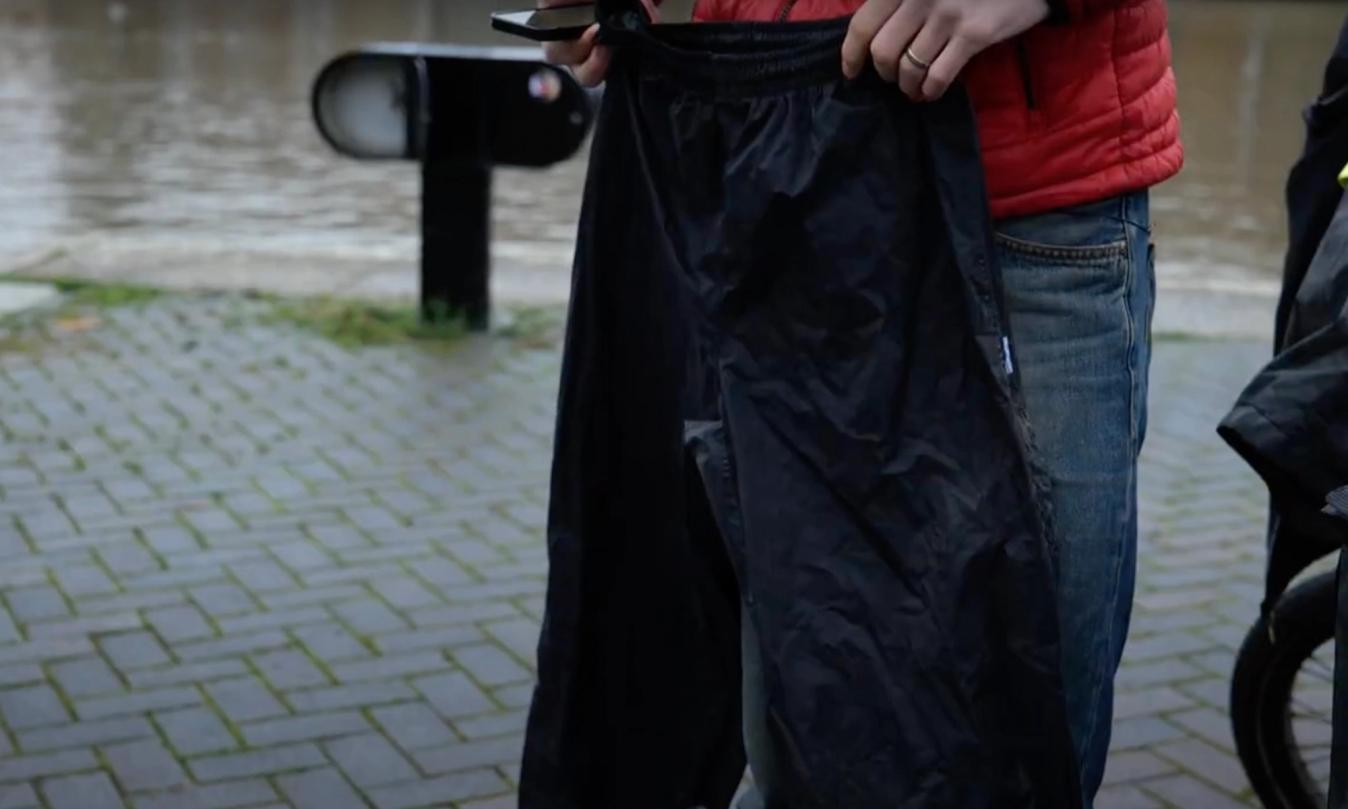
© GCN
A good pair of waterproof over trousers are an essential bit of winter commuting kit
If you are commuting a short distance in a city then the need for cycling-specific winter kit is fairly low. Any generic waterproof jacket will keep you dry and any insulated coat will keep you warm. For the most part, this will get you through a winter of riding. However, there's one other essential bit of clothing that is worth its weight in gold.
Investing in a pair of good-fitting waterproof over-trousers will have you arriving at your office clean and dry underneath. How much you are willing to spend is up to you but cycling-specific waterproof trousers will come with additional features such as reflective paneling and a cuff around the ankle to keep the fabric away from the chain.
Wet feet are also not nice

© GCN
Waterproof shoes of any type are the best solution to keeping your feet dry without the need to endlessly dry out the inside of your shoes
Arguably even worse than wet trousers are wet shoes and feet. Not only does it feel awful but wet shoes can take an age to dry out, leaving you with cold and sodden shoes to have to put back on for your next ride.
For city commuters the best solution to combat this is to get some waterproof shoes, these can either be in the form of hiking boots, waterproof trainers, or even rubber boots. Keeping the water out entirely is the preferred solution to keeping your feet nice and dry.
For longer commutes
If you are riding in between towns or cities, it is going to make sense to dress specifically for the ride. Rather than putting warm or waterproof clothing on top of your office attire, wearing some cycling-specific clothing is going to be more comfortable.
When you ride in a cycling kit this also gives you more freedom in regards to what you wear at the office as you can pack whatever you want in a bag and bring it with you rather than making it work with your other commuter gear.
If you work somewhere that has a drying room, this can be an absolute saviour on those extra wet days. Being able to put on some dry kit at the end of the day to ride home makes everything feel that little bit more manageable. If, however, you are not fortunate enough to have a drying room at work, it is worth packing a second set of tights, a fresh jersey, and a base layer to save you from putting on a cold wet kit to head home.
Bringing things with you on the bike
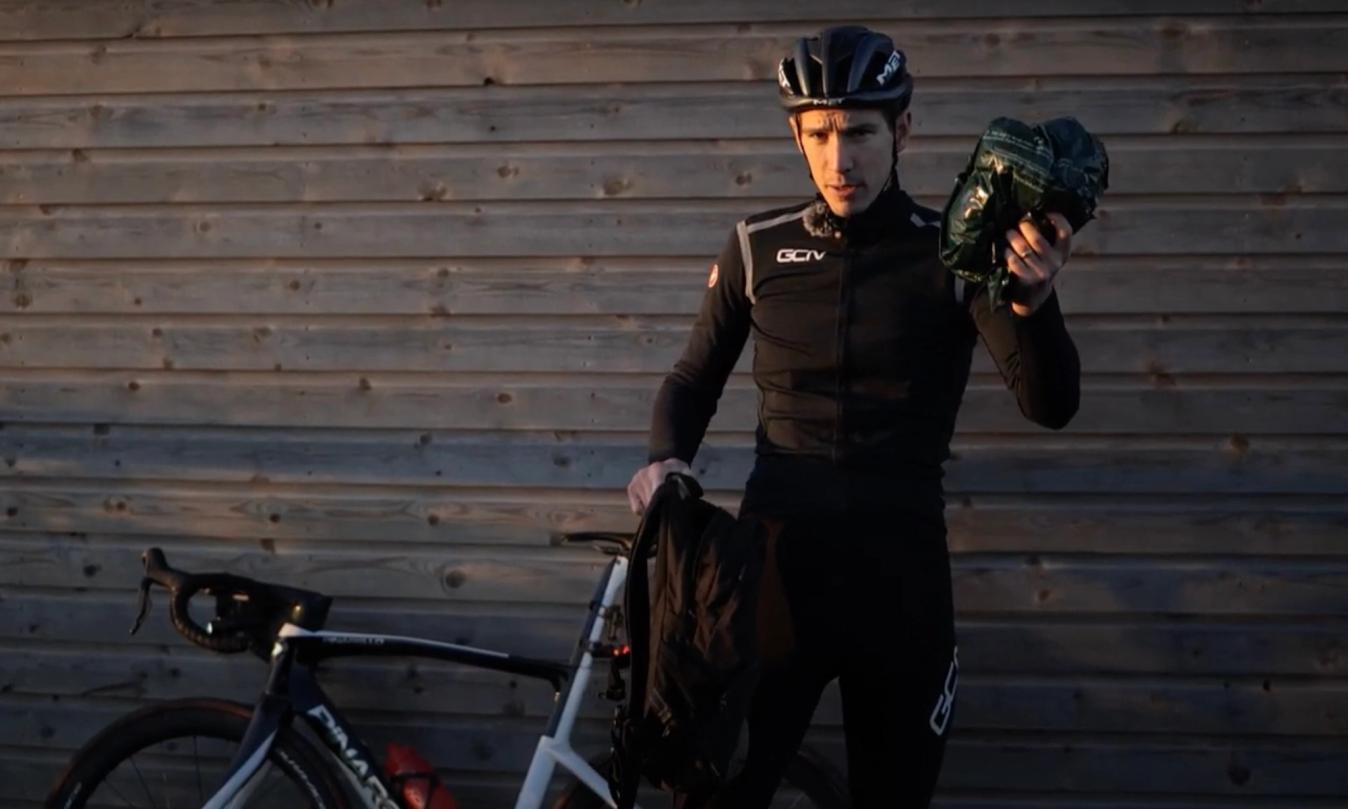
© GCN
A simple carrier bag is the perfect dry bag for keeping your office wardrobe clean and dry
There are plenty of options out there for carrying your fresh office clothes with you. Waterproof bags are a great way of ensuring your stuff gets to work clean and dry. However, they are not the cheapest things in the world.
As a cost-saving hack, you can simply use a plastic carrier bag inside your bag to put everything that you want to keep dry. If you want to separate things into different bags a set of dry bags is a good alternative, with both costing less than a specific waterproof backpack.
Fit a set of full-length mudguards

© GCN
A set of full length mudguards are the first line of defence against dirt and water. They protect both you and your precious bike
There are plenty of times when riding when waterproof clothing alone simply won’t cut it. If the roads are wet but it is no longer raining, a set of mudguards will keep the road spray from flicking up onto you and your bike. They will also save your favourite jumper from a mud splat when you accidentally ride through the only muddy puddle along your whole route.
If you are commuting further distances by road bike, mudguards can be an essential barrier between road grit and grime and your bike. Fortunately for most modern road bikes, clip-on mudguards are a good option that provides a halfway house between a naked bike and using a full-length set of mudguards.
Lights
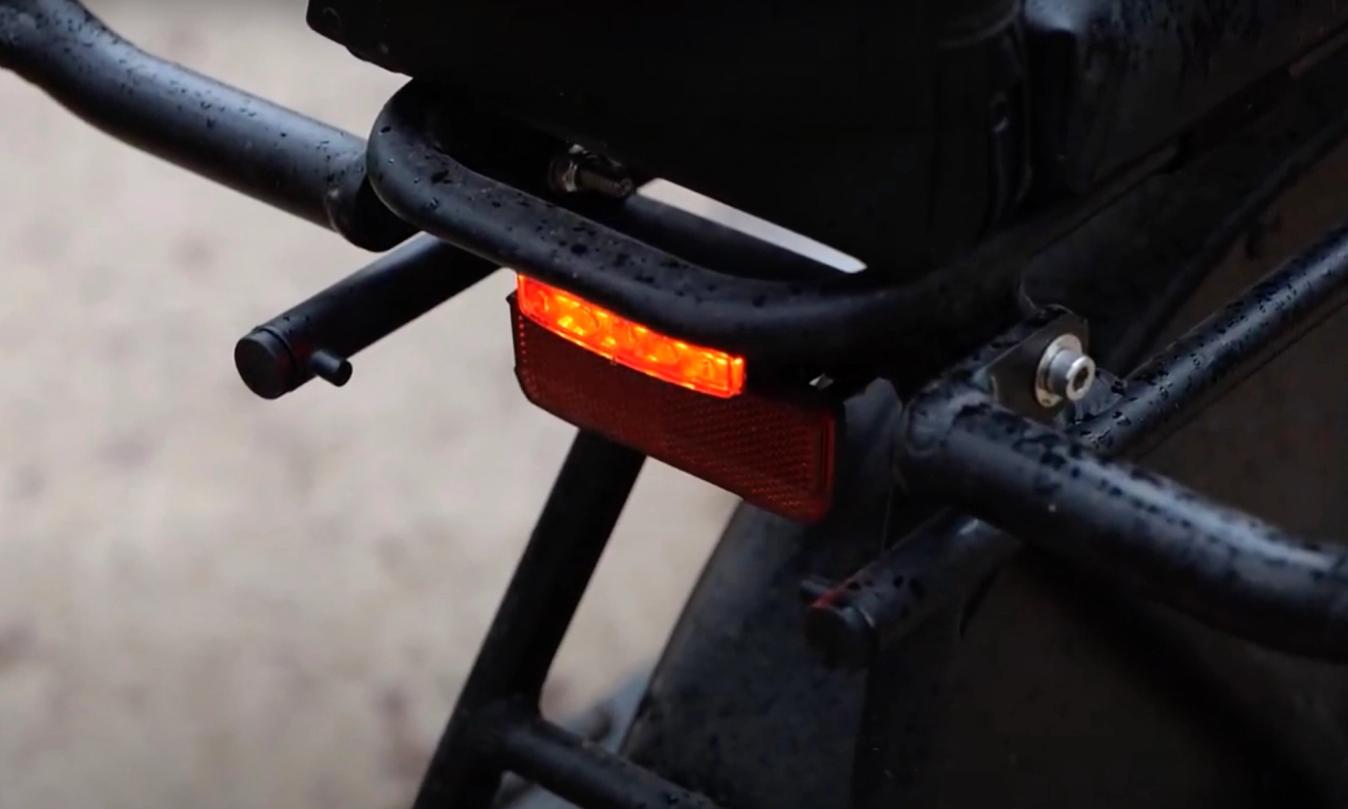
© GCN
Having a solid light as well as a flashing light will increase your visibility to other road users
Riding through the winter will mean that you will be on the roads when it is gloomy or completely dark. Having a good set of lights is an essential piece of kit even if you don’t ride in the dark, they will make you more visible to other road users at any time of day.
The type of lights you need will depend on the type of commute you have with city commuting lending itself more to lights that that attract attention to yourself. For longer commutes between towns lights that are powerful enough to illuminate unlit roads. As far as rear lights are concerned we would recommend using both a fixed red light and a flashing light that will help attract the attention of other road users.
Ride your bike as if you haven’t been seen
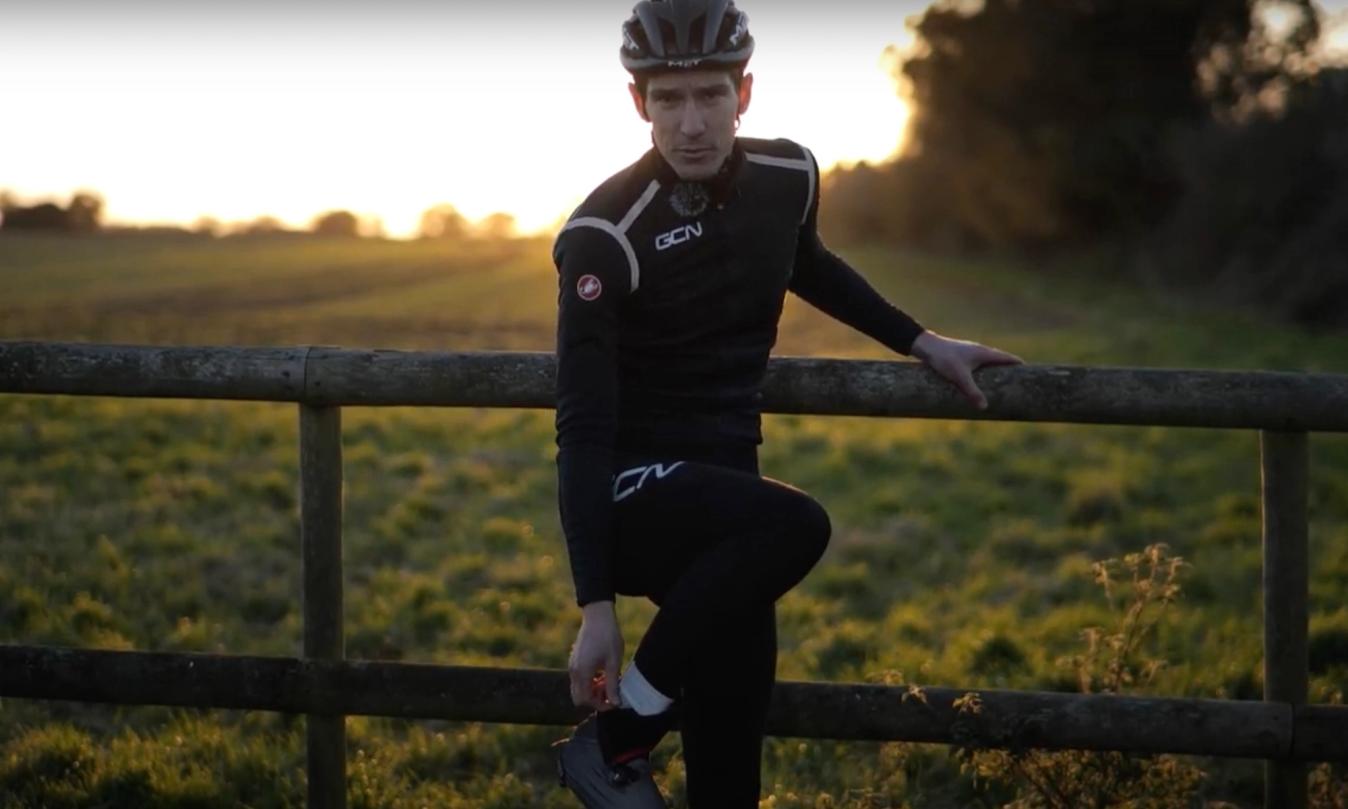
© GCN
High-vis clothing or cycling-specific clothing with reflective cuffs and seams will help you stand out at nighttime, but don't count on it
Commuting in the winter does take a slightly heightened awareness compared to riding at other times of the year. Visibility is lower, there are often more distractions like heavy rain and ice, as well as people often being more tired and groggy. All of this means that you need to take extra care on the roads as a cyclist.
There has been an interesting study in the UK that has found that the number of cyclists admitted to A&E in the winter wearing high-vis clothing is far higher than those not wearing any high-vis.
There could be a whole range of contributing factors for this but one theory is that when you wear high-vis clothing you assume that you are visible and change how you interact with traffic. No matter what you wear, riding in the winter is a little more dangerous so we advise you to take your time and assume that you haven’t been seen.
If you are a season winter commuting veteran and have any advice to share, let us and everyone else know in the comments section down below.











